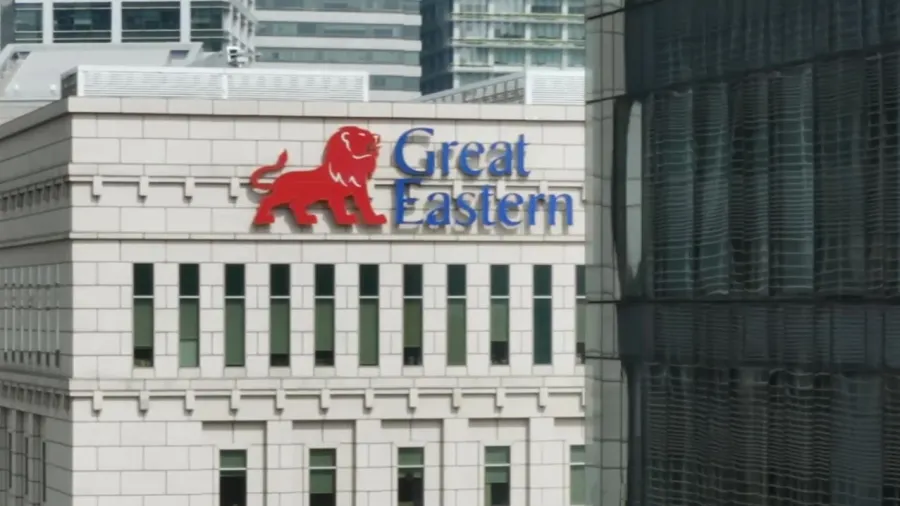
Great Eastern bridges sustainability and insurance through portfolio integration
The Singaporean insurer emphasised the role that sustainability compliance plays amongst insurers even as green investments face a supply-demand issue.
Insurers must remain cautious of the effects of climate change. Being knowledgeable of the risks of failing to comply with sustainability regulations and taking advantage of renewable energy projects could spell one’s success or folly.
“More insurers are beginning to seriously weigh the potential financial and reputational risks associated with companies that are inadequately addressing sustainability concerns and, as a result, are becoming more selective in underwriting,” according to a Sustainable Fitch insight.
This is likely to speed up credible transition plans as companies aim to maintain insurance access, Sustainable Fitch noted further.
In an exclusive interview with Insurance Asia, Great Eastern Head of Sustainability Winnie Tan talked about the company’s role and how it leverages renewable energy and climate resilience.
As the global community confronts the pressing challenges of climate change and the transition to a low-carbon economy, the role of the insurance industry has emerged as a vital linchpin in supporting these transformative endeavours.
Great Eastern, a prominent player in the insurance sector with a strong foothold in Asia, stands as a prime example of how insurance can play a pivotal role in fostering sustainability and driving the shift towards renewable energy.
Investment and underwriting
At the heart of Great Eastern’s approach to sustainability lies a multi-pronged strategy: investment, underwriting, and operational.
“You look at what is investable. We realise that there is a rush for what you call green investments. Clearly, there’s a demand-supply issue. And there might be what you call a green premium. But this is also where I think investment science is evolving around sustainable models,” Tan said.
In an S&P Global Market Intelligence article, incorporating environmental, social and governance (ESG) in an insurance portfolio allows insurance firms to wield significant influence over social and governance matters.
They exert this influence through corporate initiatives, underwriting practices, and commitments.
“Employing thematic approaches to target specific outcomes could help, and tracking KPIs could be the proof statement that the desired goals are being met,” S&P Global stated.
Great Eastern is on board that this transition not only aligns with climate goals but also fuels the economic growth necessary for a sustainable future.
One intriguing facet of the insurance industry is its dual role in investments. On one side, it scrutinises its own investment choices, ensuring alignment with sustainable principles. On the other, it aids clients in their pursuit of greener practices.
Great Eastern epitomises this multifaceted approach, engaging with both brown industries seeking transformation and pure-play green firms.
“From our general accounts, in investing or the choices we make – what to invest in or what not to invest it – what’s really important is it's not about shying away from what we call traditionally brown firms, but to look at what do we do to help our key industries and key clients to transit smoothly,” Tan said.
Through its support of renewable energy giant EDPR (formerly Sunseap), the company demonstrates its commitment to enabling a transition for its clients.
“For example, Great Eastern is a partner to EDPR APAC by insuring their solar projects, and also the protection of the employees. Upon project completion, the insurance solutions continue to protect the assets to maintain peak performance for the benefit of the facility users,” Tan stated.
Sustainability across 3 pillars
Great Eastern’s sustainable journey is defined by three key pillars: investment, underwriting, and operational.
These pillars embody the company’s comprehensive approach to addressing climate change. The integration of risk controls, risk appetite, and risk assessment frameworks form the bedrock of their sustainability strategy.
“It’s about integrating just a little bit of risk appetite and the risk assessment framework that we have; so that we know how much of it we can afford to have on our books and portfolio,” Tan asserted. “I think risk is also a very future-looking aspect as well. As we look at climate risks, there are both the physical risks and transition risks. Being able to assess both accurately [is key]. It is both, I think, an art and a science that is evolving very quickly.”
Assessing both physical and transitional risks, Great Eastern acknowledges the evolving nature of climate risks and the evolving science and art of accurate assessment.
Additionally, the company’s dedication extends to its employees.
Recognising the need for expertise and knowledge, Great Eastern prioritises climate literacy among its workforce. This proactive measure ensures that the company’s personnel possess the insights needed to navigate sustainability challenges, not only from an environmental perspective but also from a social impact perspective.
Facing the challenges
While the commitment to sustainability is unwavering, the path to sustainable investment is not without its hurdles. One of the primary challenges lies in striking the right balance between generating returns and adhering to sustainability principles.
Great Eastern faces the delicate task of selecting investments that uphold shared goals, align with policyholder expectations, and deliver satisfactory returns.
To truly make a difference, Great Eastern, along with other industry players, is urged to not merely exclude certain investments but to actively participate in shaping companies' transitions.
The Singaporean insurer offers an optimistic yet cautious perspective. The intensified focus on sustainability from governments, corporations, and individuals signifies a shared commitment towards a cleaner, more resilient world.
“People are also seeing the importance not just from a risk and compliance perspective, but also on the opportunity side. I think this is very important because this is about what the future holds,” Tan said.
Governments, with their policies and catalytic spending, are crucial in shaping the trajectory of sustainability.
Great Eastern and similar industry leaders are poised to bridge the gap between insurance and sustainability, catalysing the shift to renewable energy and fostering climate resilience.
“In the short-medium term, more insurers might focus on insurance-related emissions, raising costs or limiting coverage for carbon-intensive industries. These emissions link to underwriting activities, akin to financed emissions in finance,” insights from Sustainable Fitch said.
“Clearly, the issues haven’t all gone away, right?” Tan points out. “But it is a work in progress. And I believe that we’re heading in the right direction.”



















 Advertise
Advertise








